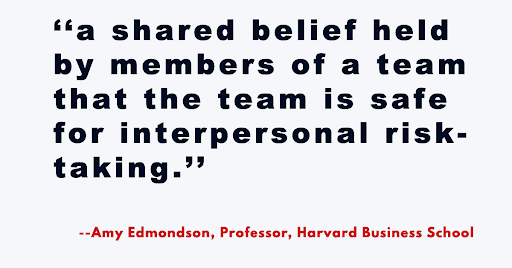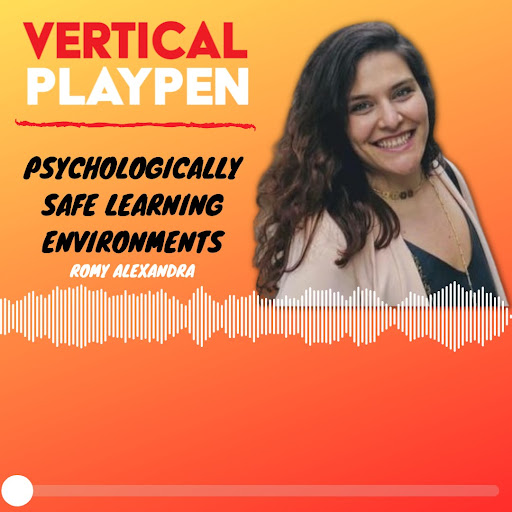Building Stronger Groups: Lessons from Google to the Classroom

Learning From A Google Experiment
Google had a question that was puzzling even their experts: why did some of their project teams perform well beyond expectations while others could barely meet their goals?
Some of the highest performing teams at Google had a mix of skill sets, others did not. Some were all from the same department; others mixed participants from different departments.
Stumped, Google’s analysts experimented further. They built teams of all introverts. They tried creating teams where everyone was friendly outside of work. They tweaked gender balance and tried higher rewards for greater output. They put together teams composed only of people with high IQ. Then they tried teams of mixed intelligences.
None of these factors mattered.
After studying 180 teams across the company, Google’s human resource experts could find no evidence that the composition of the team made any difference in whether the team succeeded or failed.
That’s when Google started looking not at the team’s individual participants, but at the culture they created, composed of both written and unwritten norms for behavior.
But even this was confounding: some groups were formal, some informal. Some made time for personal discussion during group meetings and some were all business. Some had strong leaders and some had a flat structure in which leadership was more fluid. Which norms mattered?
Then, they found the secret: the teams that succeeded valued psychological safety. These were groups where anyone could express an idea without fear of embarrassment. These teams had high levels of conversational turn-taking and expressed sensitivity to others’ feelings and moods. They exemplified what Harvard Business School professor Amy Edmondson identified as the main feature of psychological safety:

Since Google’s famous study much has been written about the role of psychological safety on business teams. But it has an even more important role in learning environments.
Creating Psychologically Safe Learning Environments
High 5 trainers Phil Brown and Lisa Hunt spoke with experiential learning expert Romy Alexandra on Vertical Playpen, a weekly High 5 podcast, about how to create psychological safety in adult or student learning environments. Romy’s definition of psychological safety is “rewarded vulnerability,” underscoring the essential “safety” component.
Romy, Lisa, and Phil explored the subtle ways in which psychological safety in learning environments can be enhanced or undermined. Their suggestions include:
- Plan the Physical Space: Safety is created in the way a meeting room or classroom is set up, even before anyone enters. Consider the different messages sent by a room with chairs in a circle vs. theater style (all facing the front of the room) in terms of how the participants are meant to interact.
- Set Expectations: Because vulnerability happens when everyone participates, set the expectation that everyone present will be contributors and co-creators, rather than “consumers” of information. Even students can contribute to their own learning.
- Provide “Challenge by Choice”: We all have our different zones: a comfort zone, a challenge zone, or a panic zone. Where possible, provide a choice of activity or level of participation based on individual needs. In doing so, you give weight to the process, not just the outcome, and respect individual journeys.
- Model Vulnerability: When you are the leader or teacher, you can model vulnerability by participating as an equal with your group in certain activities.
- Watch for Evaluative Words: Be careful with statements like, “This will be an easy lesson.” For some people, it may not be, but you’ve removed their psychological safety by declaring it so. Similarly, “That’s a great question,” may create less safety for others who think their questions are not equally impressive.
- Manage the Discussion: You can create psychological safety by pausing before beginning a discussion. Research shows that introverted people need more time to gather their thoughts and a pause puts everyone on a more level playing field. Ensure that all voices in the room are heard when it’s time for participation, not just the loudest or most persuasive.
- Mine for Opposite Experiences: Based on Google’s example, one of the most powerful ways to create psychological safety is to ensure that each experience is honored without judgment. When a strong opinion is expressed, you as a leader can facilitate a safe environment by encouraging those with the opposite experience to share next.
Psychological safety can contribute greatly to the success of a group, whether in a business or learning environment. And that success builds more success.

Learn More
High 5 Vertical Playpen podcast episodes with Romy Alexandra:
Part 1: Psychologically Safe Learning Environments
Part 2: Psychologically Safe Learning Environments
- The New York Times: https://www.nytimes.com/2016/02/28/magazine/what-google-learned-from-its-quest-to-build-the-perfect-team.html
- Amy Edmonson: https://amycedmondson.com/psychological-safety/
- Create group norms with a High 5 activity called Us/Not Us, part of our Rebuilding After COVID online professional development program.
- Read High 5’s Essentials of Corporate Culture Blog
HIGH 5 ADVENTURE LEARNING CENTER
130 Austine Drive, Suite 170
Brattleboro, VT 05301
Office: 802-254-8718
Toll Free: 877-356-4445
Fax: 802-251-7203
Privacy Policy
